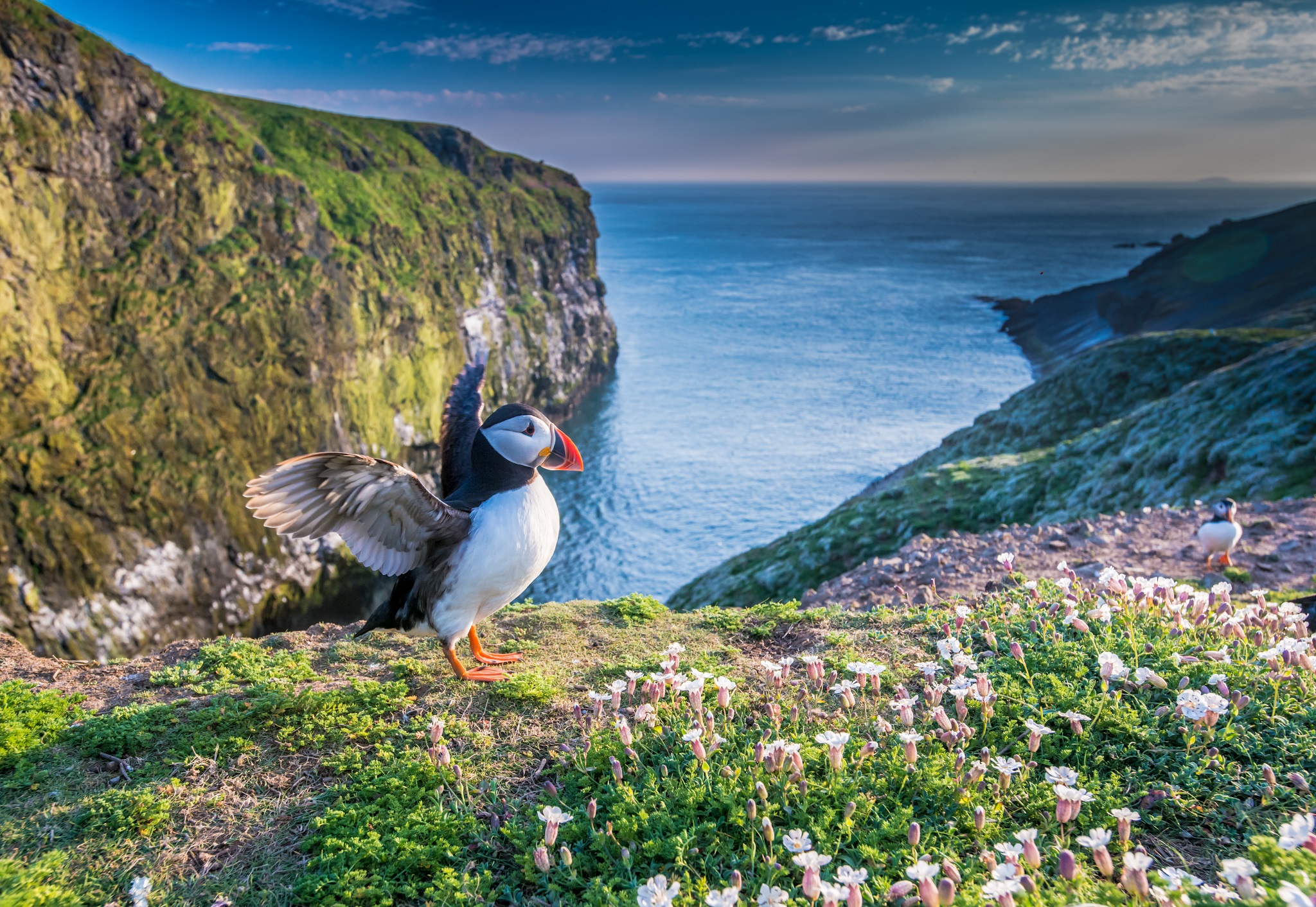We think of our lawns as somewhere to play or sit – but take a moment to think of a lawn from a bird’s-eye view. The lawn can be a larder, a shelter and if you’re a mining bee, even somewhere to build a nest – in fact, around 75% of all wild bee species nest in soil.
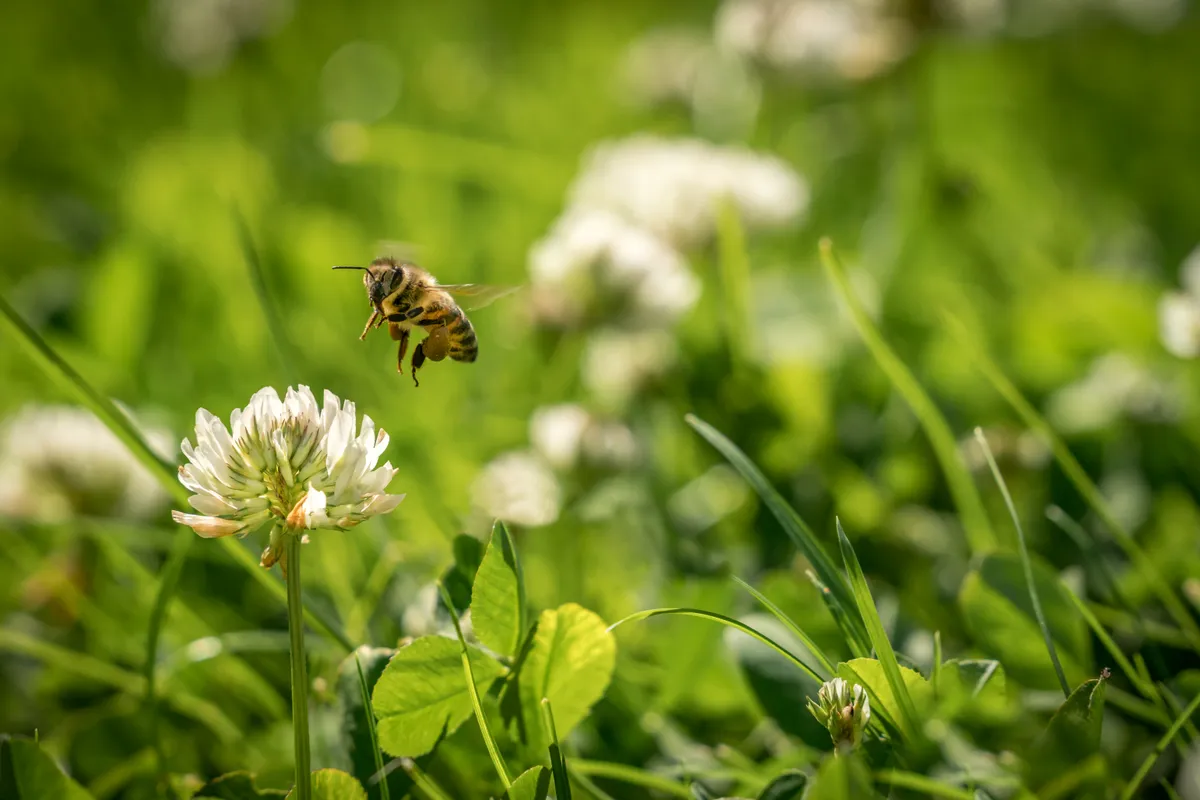
What wildlife lives in lawns?
Lawns provide a sanctuary for a host of invertebrates, from larvae and earthworms in the soil to beetles and insects in the grass. All of this life in turn provides a meal for birds such as blackbirds, robins and thrushes, as well as hedgehogs, frogs and many other animals.
Put simply, your lawn matters! Leaving the lawn to grow long is great for wildlife, and a low maintenance option for you too – but it is not for everyone, so read on for a variety of ideas to suit your garden.
How do I make the best lawn for wildlife?
First, take a moment to look closely at your lawn and consider how you use it. Celebrate the plant diversity you may already see. Dandelions, daisies, clovers, mosses, buttercups, self-heal and bird’s-foot-trefoil are all often found in lawns, offering good nectar and pollen sources, and a colourful feast for your eyes too. It’s not just pollen that these plants can provide – caterpillars of common blue butterflies will be looking for trefoils and white clover to eat.

But let’s not forget the grasses themselves. If you are lucky, you may have a variety of grass species, and each can play an important role. For example, the caterpillars of meadow brown butterflies eat grasses such as fescues and bents; their larva will over-winter deep in the base of these grass thickets, too. Leaving your lawn to grow longer and set seed will encourage different local grasses to establish over time.
Can I sow wildflower seeds on my lawn?
You may be keen to add more flowering plants, perhaps through meadow wildflower seeds sown on bare soil patches. But keep in mind, if your lawn has been fed with nitrogen lawn feed, it will be too rich for your wildflower seeds, which typically prefer low nutrient soils.
So, firstly, stop feeding your lawn – and remove mower clippings to reduce nutrients. Another trick is to sow yellow rattle, which will weaken vigorous grass roots. Best sown in autumn, yellow rattle seeds like cold conditions to establish.
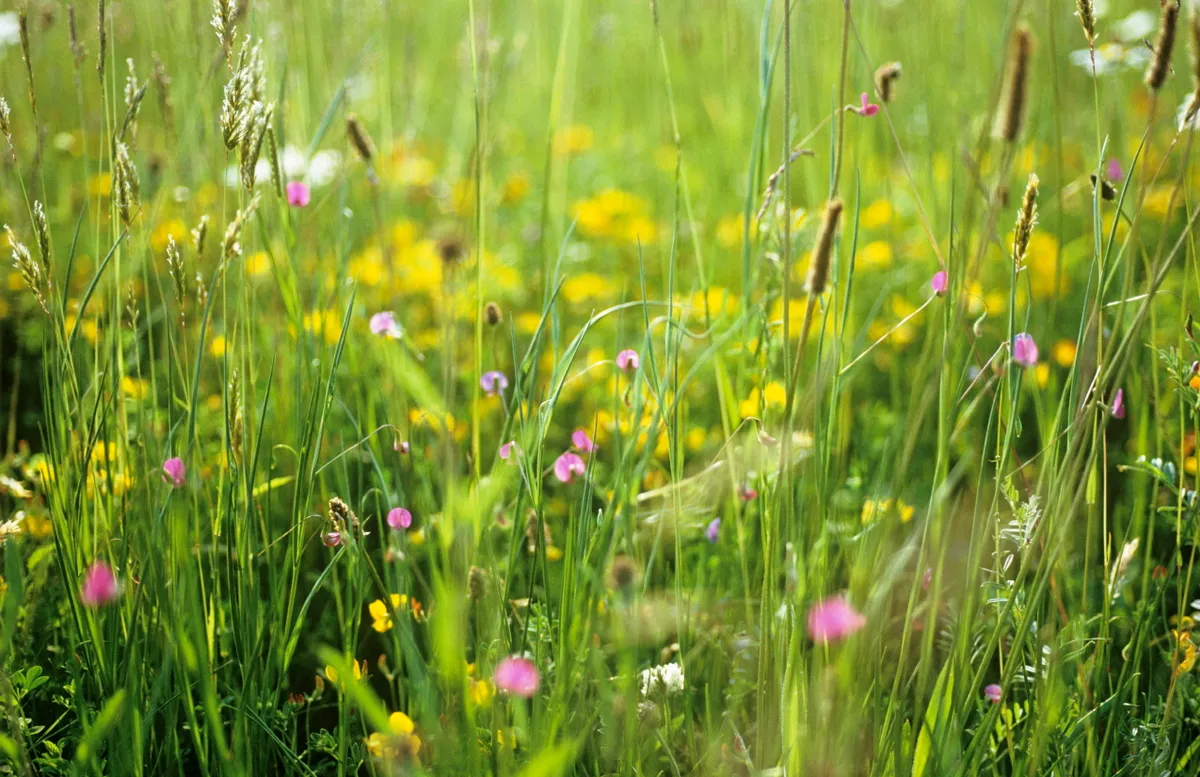
More ideas for seeds which can out-compete vigorous grasses include Phacelia tanacetifolia, foxglove and oxeye daisy. Plug plants are always an option too, such as cowslip, field scabious or bugle, but maybe try bulbs such as crocus, Narcissus ‘minnow’ (best nectar daffodil) and snake’s-head fritillary as a showstopper.
For those that fancy something different, bulbs such as alliums, globe thistle and honey lily are reliable in early summer, growing tall in long grass to give bold colour and benefits to wildlife.
What if I need an area of shorter grass?
Many people like to reserve areas of shorter grass too – if your garden doubles as a football pitch for your children, for example. To help support wildlife, try setting the mower blade to a higher cut, this will add to the depth of grass thicket for invertebrate habitat, allowing plants such as clovers and trefoil to flourish.
Consistency of management is an important factor to determine which flora thrive. For example, stop mowing in May/June – with a July cut – to encourage trefoils and bugle. Cut routinely every six weeks and you are likely to see clovers and daisies along with the lacy heads of ribwort plantain.
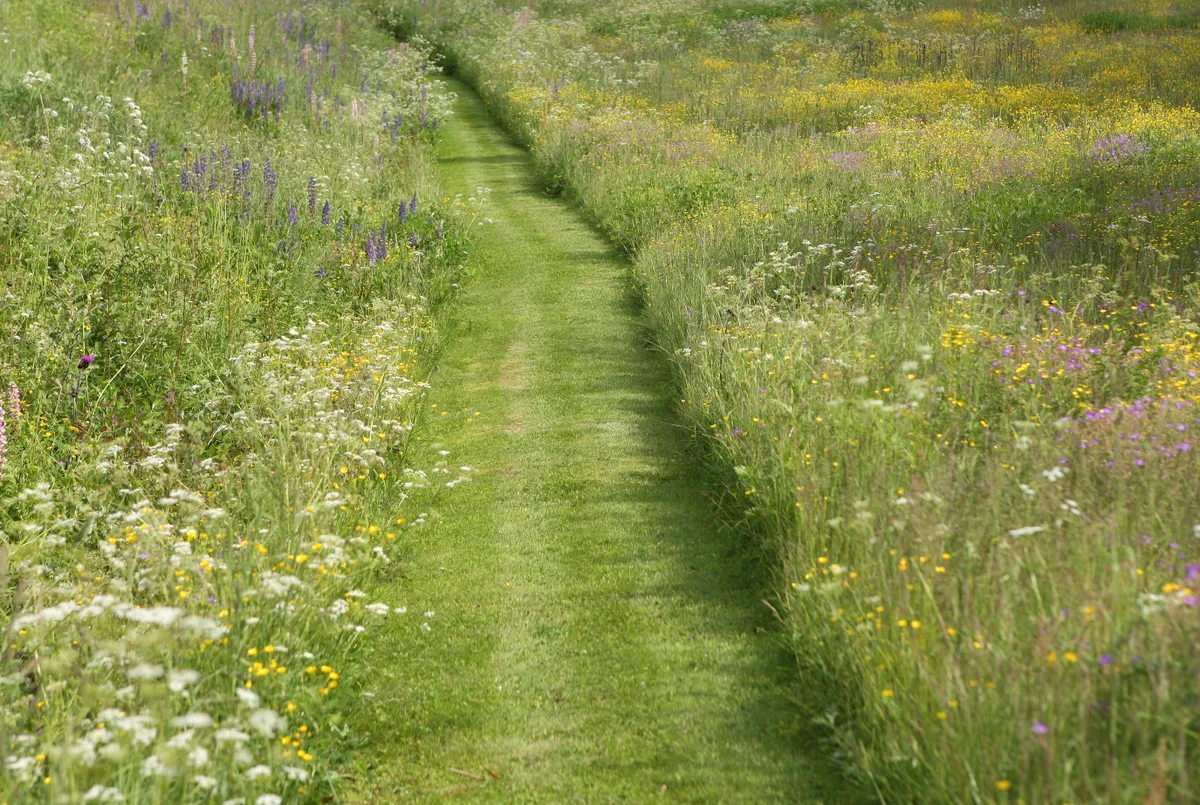
You may also prefer short-clipped paths weaving through longer grass. This can bring unexpected pleasures such as wild violets.
These short-mown areas are also useful around birdfeeders to avoid providing shelter to predators in long grass. Paths of bark mulch are useful too and much enjoyed by worms – and birds.
Alternatively, a ‘tapestry’ lawn, with a mix of mat forming alpines and/or herbs such as creeping thyme or chamomile provides an enviable floral lawn – with natural fragrance too.
Are plastic lawns bad for wildlife?
Regrettably for wildlife, some people opt for plastic lawns, which are not as low maintenance as you might think, with ongoing tasks such as the management of algae and leaf debris. These restrict access to the soil beneath for burrowing insects and to the ground above for soil dwellers such as worms.
They are mostly made from polypropylene or nylon (polyamide), and fragments from this material can make their way into the soil, and beyond, in the form of microplastic pollution so is detrimental to the environment. Most importantly, plastic has a significant impact on your garden wildlife, not least by removing soil as a vital food source for foraging birds and hedgehogs.
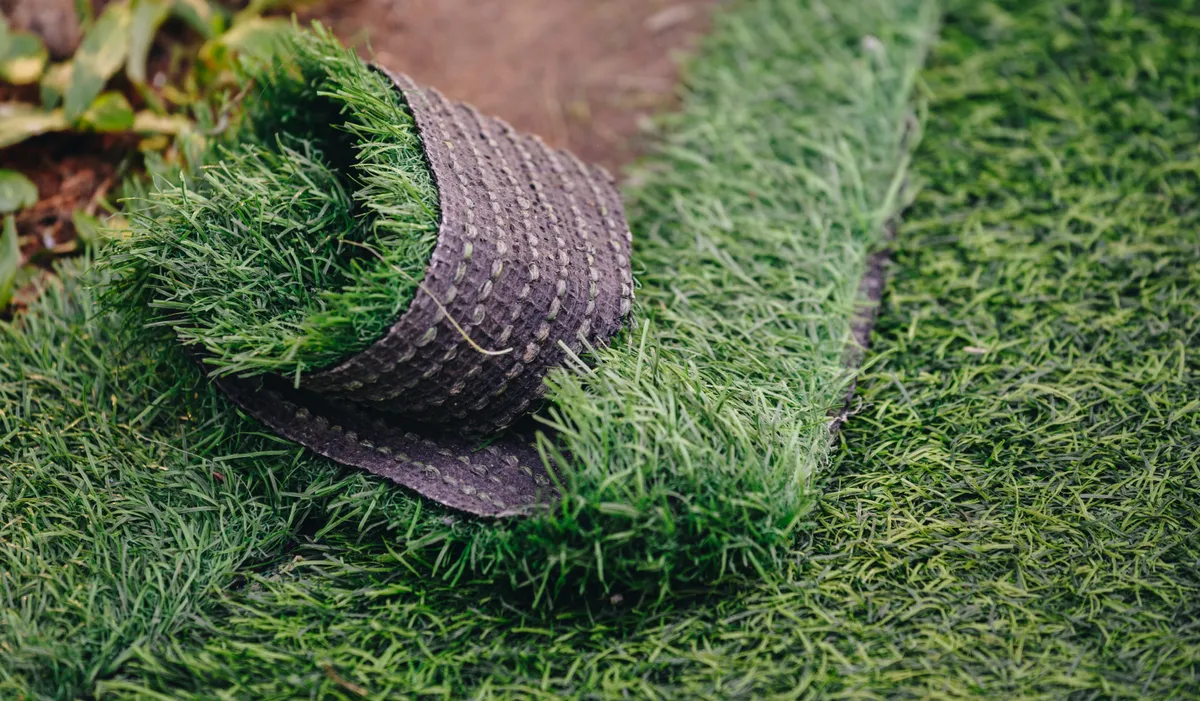
So, rejoice in your lawn’s floral diversity – and its role in your garden. It’s not just a surface to play on, or a place to plant the deckchair – although that’s important too. Rethink your lawn and bring a whole new dimension to your wildlife gardening.
Jane Taylor is a community gardener and member of Devon Wildlife Trust
Opening illustration: © Malte Mueller/Getty
